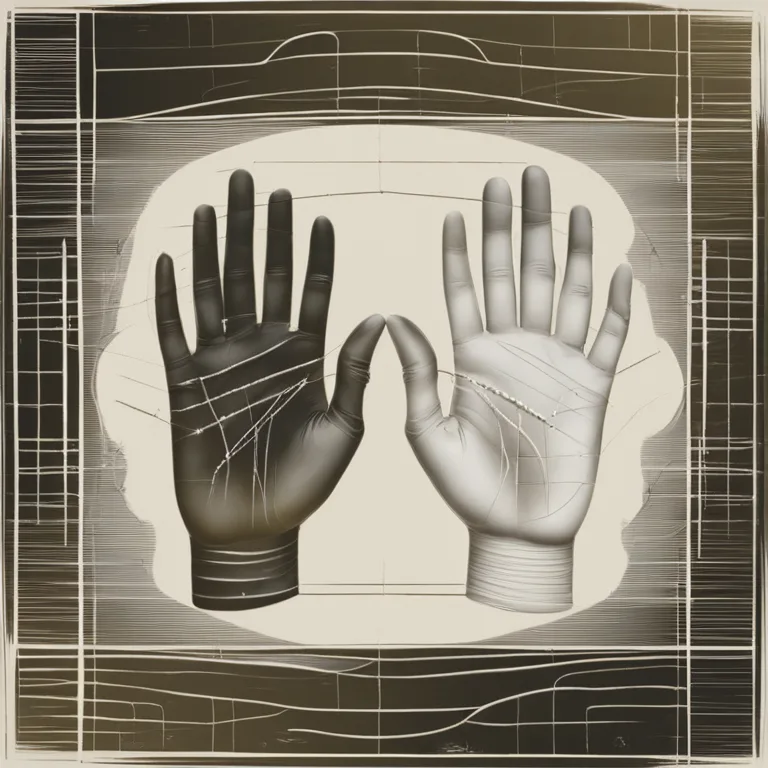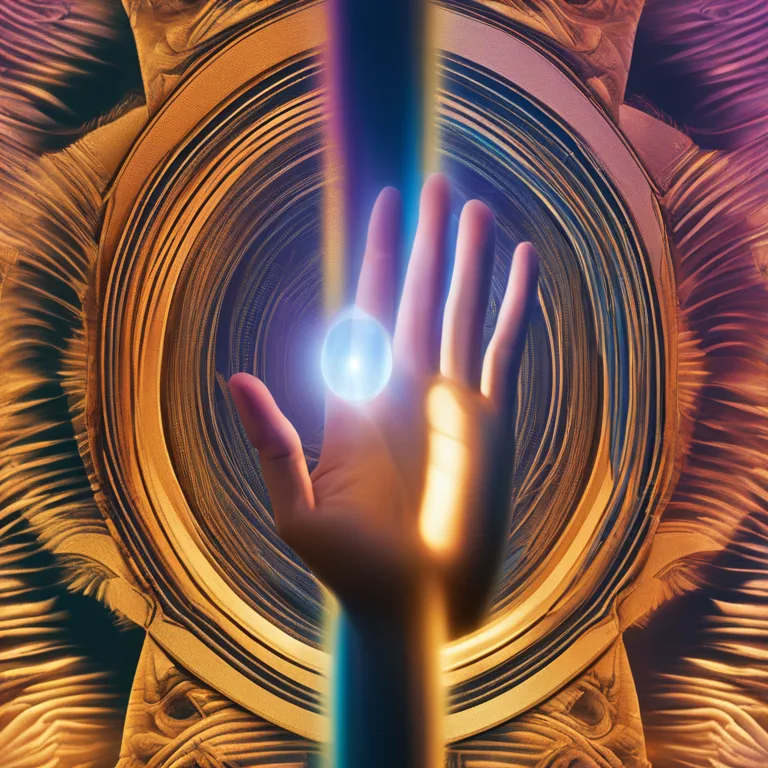
The Diverse Tales Told by Left & Right Palms
Discover the differences in palmistry readings between the left and right hands, and what each says about your life's journey.
article by Nora Pennington
The Significance of Each Hand in Palmistry
Palmistry, the age-old practice of reading palms, offers a fascinating lens through which to view an individual's character and life experiences. One fundamental concept in palmistry is the distinct roles that the left and right hands play in conveying personal narratives. As we delve into the significance of each hand, we'll unfold the subtleties that make every palm's tale unique. The left hand is traditionally associated with the qualities we're born with, the potential and hidden characteristics that we carry through life. The right hand, conversely, represents the traits we've cultivated, the tangible accomplishments and the milestones we've crossed. Both palms, read together, weave a story that is both preordained and self-scripted.

Decoding the Dominant Hand
In palmistry, the dominant hand—the one you use to write—reveals the most about your active consciousness, including your personal achievements, the impact of your decisions, and your conscious efforts. For the majority of people, this is the right hand, but left-handed individuals find their active journeys reflected in their left palms. It's through this hand that palmists decipher the evolving aspects of your life. For instance, changes in the lines or markings over time can indicate personal growth, successes, and even reversals of fortune that are a result of one's choices and actions throughout life.

The Passive Hand's Hidden Meanings
On the flip side, the passive or non-dominant hand holds a blueprint of inherent potentials and could be seen as a window into the unalterable traits and karmic challenges one faces. This hand portrays the more static and genetically inherited aspects of an individual’s life, which includes the influence of family background, genetic tendencies, and possibly the pre-decided milestones of one’s destiny. It’s fascinating to observe how the lines and mounts in this hand remain relatively consistent, providing a stable grounding against which the story of the dominant hand can be compared.

Interplay Between the Hands
The real magic in palmistry lies in the interplay between both hands. When the lines and features of the dominant hand radically differ from the passive hand, it suggests a life markedly shaped by personal effort and experiences. Conversely, similarities between hands may indicate a strong alignment with one's predestined path. Frequently, palmists examine markers such as the heart line for insights into emotional evolution, or the fate line for indications of life direction changes, assessing them across both hands to get a comprehensive understanding.

Reading Beyond the Lines
A comprehensive palm reading extends beyond just the lines. Features such as finger shapes, nail types, and skin patterns offer additional insights. For example, the texture of the skin can reveal energetic dispositions, while the shape and flexibility of the fingers can reflect personality traits. The analysis of these characteristics in conjunction with the lines and mounts of each hand offers a deeper dive into the psyche and life path of an individual.
Modern Palmistry Considerations
With the advent of new psychological and scientific understanding in 2024 and beyond, modern palmistry integrates traditional interpretations with contemporary insights. Current palmists incorporate knowledge about neuroplasticity and genetics, enhancing the narrative told by the hands. They believe our hands change over time—not only reflecting our past and genetic predispositions but also the ways in which our habits, decisions, and even changes in mindset alter our destiny.
Published: 1/3/2024
Modified: 1/3/2024
More predictions
Come back here soon to learn more about yourself and your future


Palmistry Clues to Predicting Parenthood
Delve into the palmistry lines associated with predicting childbirth and learn what your hands may reveal about future family life.


Palm Lines and Love Connections
Delve into the fascinating world of palmistry and discover how your palms may hold the secrets to love and relationships.


The Origins & Journey of Palmistry
Trace the fascinating history of palmistry, understanding its ancient roots and its evolution through cultures and time.